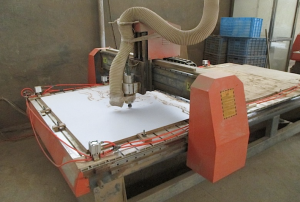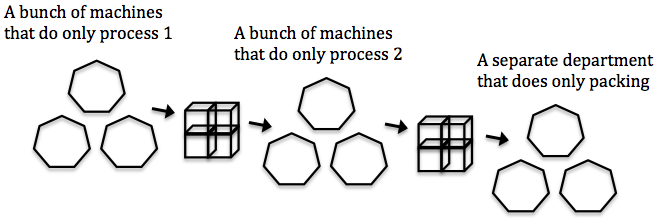
Planning the start of production so that a first article can be made and checked before the rest of mass production takes place... That’s not something the average Chinese factory does, unfortunately.
I am not referring to the pre-production samples, but to the first piece out of ‘real’ mass production.
By real mass production, I mean this piece has to be made in the same material and/or components, on the same equipment, by same people, etc. as mass production.
Why do many manufacturers skip this step? There are mainly 3 reasons:
- To save a bit of time.
- Because they tend to be over-optimistic. They don’t anticipate potential issues. If they reflected on their past quality issues (and the amount of money they lost that way), they would probably conclude that it is worth the little extra time investment.
- Because their production operators are paid by the piece, and they want to work continuously in the same way on the same batch. They don’t want to do their setup, make 1 piece, and then wait a bit (or switch back to another job).
Examples of first article validation
When wood furniture is made, a relatively frequent issue is difficulties in assembling the full product. There might be a variety of reasons for that, among which:
 Wrong cutting program loaded in the automated cutting machine
Wrong cutting program loaded in the automated cutting machine- Manual cutting is done the wrong way because the piece is not positioned correctly into the jig
- The drilling fixture is loose and the part being drilled is not always in the right position
- Wood chips accumulate in the drilling fixture, making the location of the drilling hole shift over time
- The drilled hole is chipped on the edge
- The drilling bit used is wrong (too small or too big)
In short, things can go wrong in many ways!
Imagine cutting and drilling all the MDF to make 1,000 cabinets, only to discover at the last moment that you need to rework some parts and re-produce some others. That’s a very heavy loss — not to mention, a delay in shipment.
What do good manufacturers do? Of course, they put processes in place to address all these potential failure modes. But that’s not enough. Once in a while, something will go wrong. So, they cut & drill the parts to make 1 finished product, and they assemble it right away. If that’s OK, the upstream processes (cutting, drilling, etc.) can keep going.
I could go on and on with examples. Here are 2 others:
- In plastic injection molding, validating a first good piece is an integral part of signing off on a new mold.
- In garment production, buyers often require “the first samples coming off the production lines”, to confirm that all is good. Many issues are found at that point, from the wrong placement of labels to a mixup of colors.
When does a first article validation not make sense?
If a long time passes until the first completed item rolls off the lines, and if long setup times are necessary at several steps, if might be impractical.
Basically, this type of organization (in disconnected islands) won’t make it easy:
And this type of line setup will make it very easy.
Is it always appropriate?
If a manufacturer is about to start making a new product, and if expected volumes are high, it makes more sense to do a full-blown pilot run. And another one, and another one, until it is demonstrated that this new product can be made at the desired pace and at the desired quality level.
Conversely, if the production batch is very small, and if the manufacturer is quite used to making that specific product, there might be no need to spend more than a few minutes and inspect the first article…


No comments:
Post a Comment